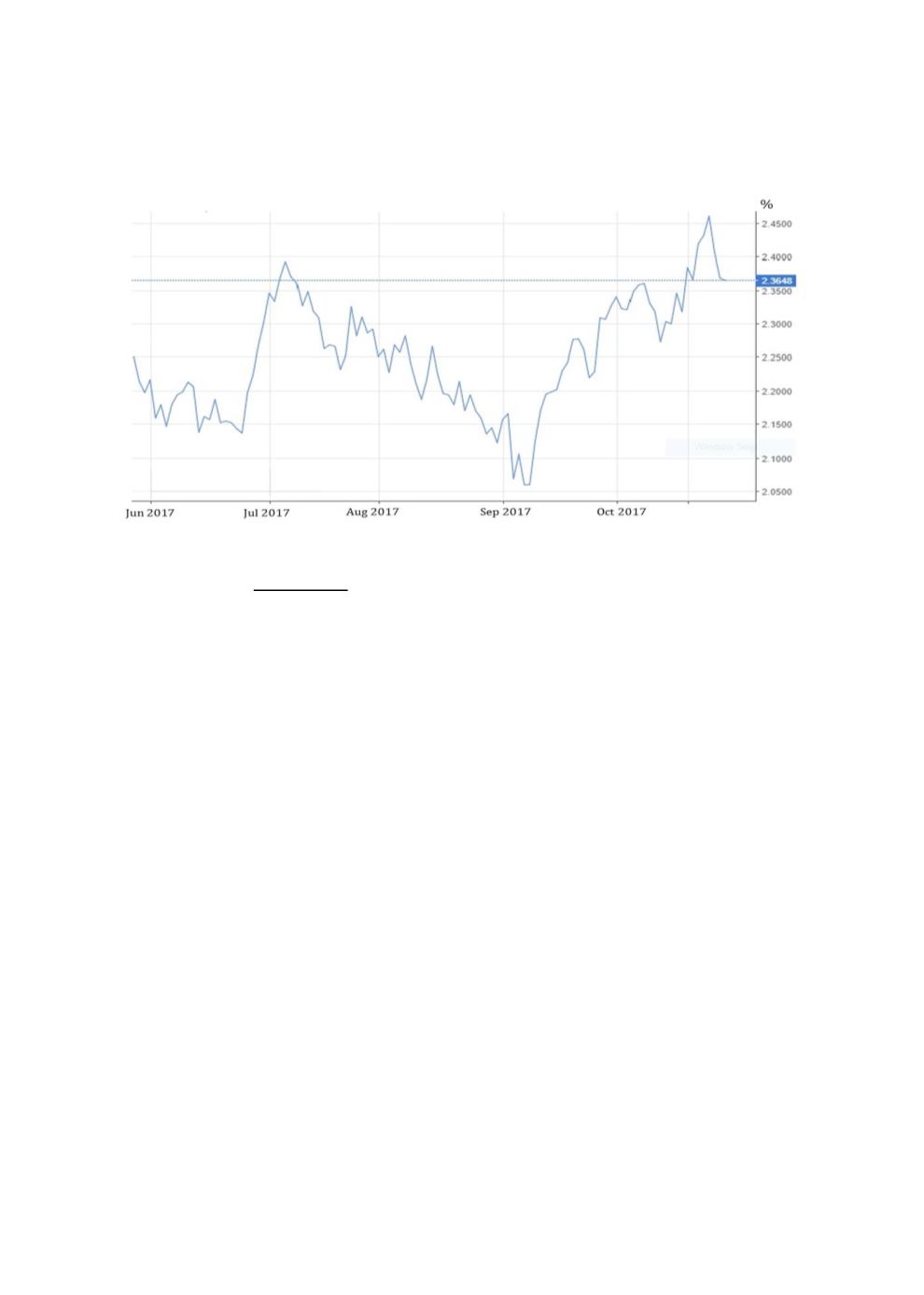

108
Chart 4.28: USD 10-Year Sovereign Bond Yield
Source: Trading Economics
Analysis of Sukuk Investments – Demand (Buy Side)
According to the DIEFC Report (2017a), Dubai is the world’s leading location for USD-
denominated sukuk listings, which are offered by DFM and Nasdaq Dubai through a single
trading platform. As at end-October 2017, both exchanges hosted about 75 listed sukuk. The
DIEDC (2017a) stated that Nasdaq Dubai plans to set up a global sukuk centre, which is
expected to further develop Dubai’s sukuk industry. With the institution of this centre, more
new offerings will be introduced, including retail sukuk, while secondary sukuk market trading
will be made available to SMEs.
Due to the prevalence of USD-denominated debt securities in the UAE, demand for fixed-
income instruments is mostly driven by financial institutions and fund-management
companies. Sukuk investment by other key institutional investors such as pension funds or
insurance/
takaful
companies is very limited, possibly due to the absence of long-term sukuk,
the UAE’s tax-free regime which creates a level playing field between debt and equity products,
and the dearth of LCY bonds. The UAE’s biggest sovereign wealth fund, i.e. the Abi Dhabi
Investment Authority (ADIA), which could possibly be a catalyst for the growth of the
ICM―like what Malaysia’s Khazanah Nasional does―has not tapped the domestic market.
Rather, the ADIA manages a diversified global investment portfolio consisting of various asset
classes.
4.3.4
KEY FACTORS UNDERPINNING THE UAE’S SUKUK MARKET
Leveraging the DIFC infrastructure as the leading Middle Eastern financial centre, the
UAE―particularly the Dubai government―has been able to attract many foreign investors
worldwide. Article 121 of the UAE Constitution enables the federation to establish financial
free zones in the Emirates and to exclude the application of certain federal laws that are based
on the civil law in the centre. A number of laws had created the DIFC, its own financial
regulator (the DFSA) and other necessary bodies. The laws set out the objectives, powers and
















